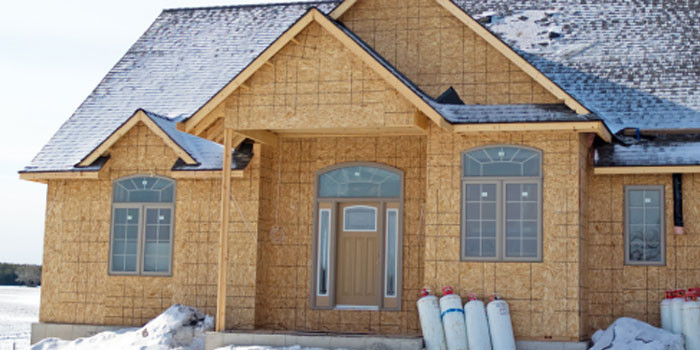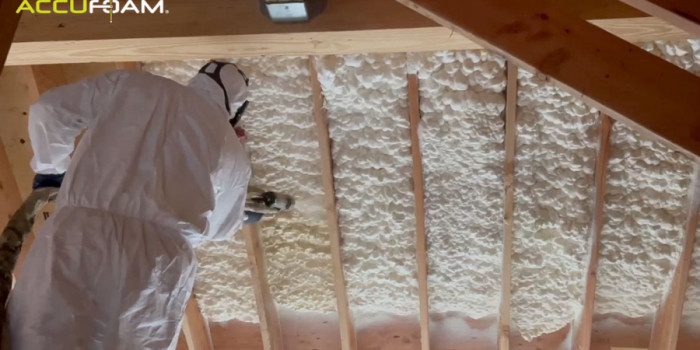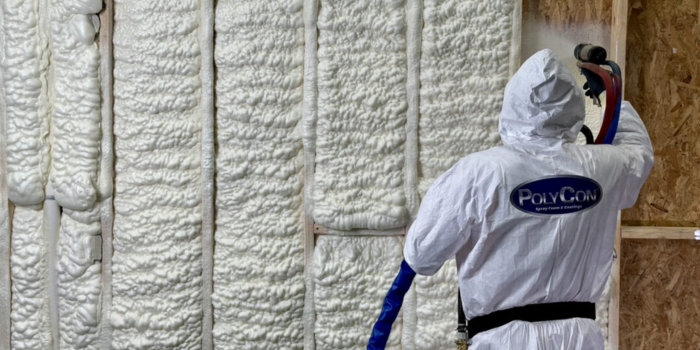Ice & Easy


SPRAY FOAM MAGAZINE – Curling is a popular sport and pastime in many colder locales, but nowhere is curling more of a cultural phenomenon than in Canada. The country has nearly 1,000 curling centers ranging from large inner-city training complexes to small local clubs run by passionate volunteers. The Otterburne Curling Club in Manitoba, Canada is the latter. The club has been a fixture in the community since 1949, inspiring a love of the sport in generations old and new. But at 75 years old, the building’s age was beginning to show. The rink faced a host of issues related to the fiberglass insulation lining its walls and roof, such as high energy bills, fluctuating ambient temperatures, pesky condensation, and, perhaps worst of all, problems keeping the ice in prime condition.
For years, Albert Poirier and his fellow board of directors’ members tirelessly applied for grant funding to help give their beloved club a much-needed revamp. Once they had finally secured all the funding they’d need for the remodel, Poirier contacted Performance Insulation Inc, a team of insulation experts from the next-door town of Niverville, led by General Manager Rudi Sawadsky.
After speaking with Poirier, Sawadsky stopped by the site to assess the current insulation situation and learn more about the club’s needs and expectations. “They were exploring options, and we came out to look at the job site and see what they wanted,” Sawadsky recalls. “The old fiberglass was giving them issues with condensation and spray foam was the best option by far.”
In an interview with SteinbachOnline, Poirier described a few of the ongoing issues caused by the ancient fiberglass system.
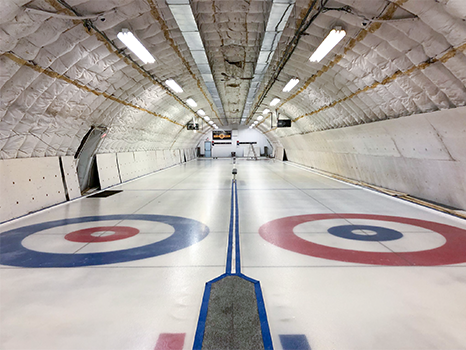
BEFORE THE INSULATION: Previously, the rink was lined with old fiberglass insulation, but this was inadequate and caused condensation problems that affected the quality of the ice.
“Whenever the sun would shine on the building, water would start dripping from the ceiling, and that’s not good when you’re curling,” Poirnier recalled. “People were cold in there, and not comfortable, so you're not playing well, and the ice surface is frosty.”
The maintaining a consistent, high-quality ice floor was a key priority in deciding to install spray polyurethane foam. To stay frozen, the rink’s ice needs to remain at or below 30 degrees Fahrenheit, with no temperature shifts across the floor. The club also wanted the indoor ambient temperatures to remain comfortable enough for the players. This is easy to accomplish with proper insulation, but the fiberglass was falling short and needlessly increasing the club’s energy bills. Tearing it all out and starting from a clean slate was the best way forward.
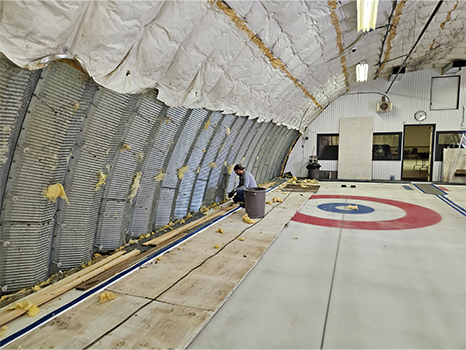
Volunteers helped tear out the old insulation to make way for the new Grizzly Gold MD closed-cell foam. They worked hard to clear the metal of all debris so that the Performance Insulation team would have a clean substrate to spray onto.
Although the club had secured over $200,000 in grant funding for the remodel, the board was determined to stick to a lean budget and be as self-sufficient as possible. They assembled a crew of volunteers- club members and community friends who wanted to get involved and give back. After seeing the fiberglass insulation lining the length of the rink, Sawadsky told Poirier the rink would need extensive site prep to get the walls ready for a new spray foam system.
“We explained what we’d need the site to look like to get started. The ceiling and walls would need to be free of debris and completely dry.” Sawadsky explained.
The club had their work cut out for them, but the volunteers were not bothered by the challenge. They stripped out every trace of the old fiberglass batts and didn’t leave a single scrap behind. Cumulatively, the volunteers contributed nearly 400 hours of work during the rink’s remodel.
Once the rink had been emptied of fiberglass insulation, Poirier called Sawadsky and informed him that the club was prepped and ready for Performance Insulation to get started on the foam install. In May 2023, Sawadsky and a team of six descended on the club- three technicians to install Grizzly Gold MD closed-cell foam and another three employees to apply the fire coating afterward. The Performance Insulation team was at the rink for about 10 days from start to finish.
When Sawadsky and his team arrived at the rink, it looked quite different than what he’d seen during his previous visit. Almost everything had been removed, and not just the fiberglass. The walls were stripped bare and overhead lights and other fixtures were removed. The only sign that it had been a curling rink was the faded targets painted on the scuffed floor.
The club’s office and lobby are a standard framed building, but the rink itself is rather unique in its appearance. It’s long and tunnel-like, shaped like a cylindrical arch, with a frame made of fluted metal sheeting, like an outbuilding. Given these characteristics, high-quality insulation is vital to the building’s health. The former fiberglass insulation only had an R-value of about R-5, but the new foam would raise that value to R-24.
Before getting into the foaming process, the Performance Insulation team took measures to protect the rink’s floor and the few remaining fixtures from any possible overspray from either the foam or the paint. They wrapped all of the exposed vents, pipes, and curling lane guardrails with plastic sheets. They also laid down plastic on top of the floor where they’d be working. Although the floors would be replaced later, they wanted to leave the site in the same condition they’d found it. To protect themselves, everyone suited up in Tyvek coveralls, gloves, boots, and a full-face respirator.
The technicians applied Grizzly Gold MD closed-cell spray foam to the rink’s walls and roof in a four inch layer to achieve the R-24 value. The metal substrate’s fluted texture served as a guide for the foam. “We filled in the ridges, and it made it very easy for the foam to adhere to.” Sawadsky said.
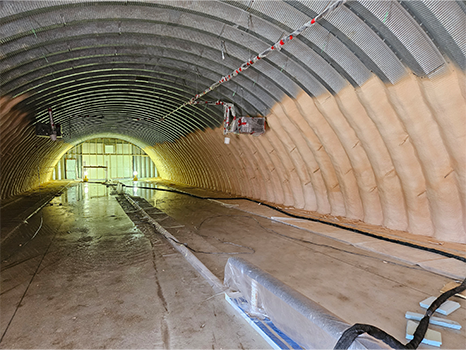
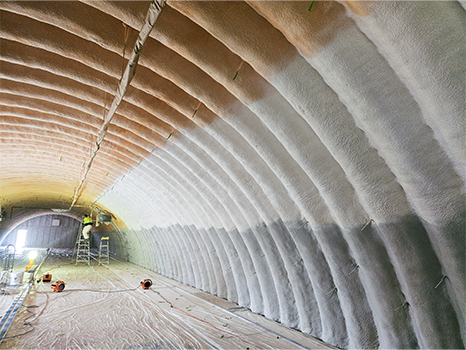
Performance Insulation foamed the lower part of the walls on both sides before starting on the higher ceiling portion.
Applying the foam took about a week for the team of three to complete, and there was one final step afterward. The club had also requested the foam be painted white with fire-resistant paint. The roof and topmost section of the walls would remain exposed, and they wanted the rink’s interior to be bright and inviting. Performance Insulation sent in another team of three to add the paint, which took an additional three days to finish. Using paint sprayers, they applied DC315 intumescent fireproof paint on top of all the exposed foam.
Because the fireproof paint is more sensitive to environmental humidity than spray foam, the team set up portable fans to keep excess moisture at bay while they painted. The far end of the rink also had a large fan built into the wall which they could turn on as needed to keep air flowing through the rink.
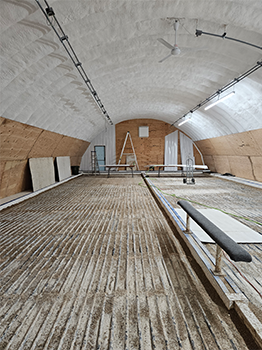
A few days after finishing the foaming process, Performance Insulation returned to add white fireproof paint overtop of the foam.
“The outside weather was starting to warm up, making the humidity higher,” Sawadsky said. “The fans worked great to keep the humidity out.”
After 10 days of work, Performance Insulation left the rink foamed and ready for the next phase in its remodel. The club installed plywood and aluminum siding to the walls on the far end of the rink, as well as on the bottom portion of the cylindrical walls. The club would later use a portion of the siding to hang announcements and ads from sponsors.
The Otterburne Curling Club is now finished with its remodel and has reopened the doors to its members. Thanks to local grant funding, community volunteers, and local businesses like Performance Insulation, the club is ready to slide into a new era, this time without the hassle of high energy bills, faulty fiberglass insulation, and drippy condensation speckling the smooth ice.
For use by SprayFoamMagazine.com & Spray Foam Magazine
Disqus website name not provided.






